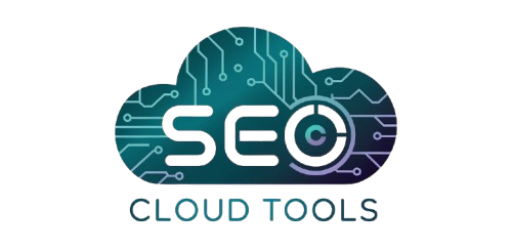Social media and SEO are two pillars of digital marketing, and while they serve different purposes, their synergy can significantly enhance your website’s visibility. By strategically leveraging social media, you can boost your SEO traffic, improve brand awareness, and drive meaningful engagement.
This article explores how social media and SEO complement each other and actionable strategies to maximize their impact.
The Connection Between Social Media and SEO
While social media activity is not a direct ranking factor for Google, it has a profound indirect impact on SEO.
How Social Media Impacts SEO:
Increased Content Visibility: Social media shares drive traffic to your content, signaling its value to search engines.
Backlink Opportunities: Viral content shared on social media can earn high-quality backlinks from authoritative sites.
Improved Brand Signals: A strong social media presence enhances brand trust, which can positively influence click-through rates (CTR).
Faster Indexing: Social media amplifies the visibility of your content, leading to faster indexing by search engines.
Strategies to Use Social Media for Boosting SEO Traffic
1. Share High-Quality Content Consistently
Social media thrives on valuable, shareable content. Consistently sharing high-quality content drives engagement and encourages users to visit your website.
Best Practices:
Create blog posts, infographics, and videos tailored to your audience’s interests.
Use social media analytics to identify which types of content perform best.
Encourage users to share your content by adding social sharing buttons to your website.
2. Optimize Your Social Media Profiles
A well-optimized social media profile enhances your online credibility and helps users find you more easily.
Key Elements to Optimize:
Username: Use your brand name consistently across platforms.
Bio: Include relevant keywords and a link to your website.
Profile Picture: Use a high-quality logo or image that represents your brand.
Contact Info: Ensure your contact details are accurate and complete.
Pro Tip: Add links to specific landing pages instead of just your homepage for better targeting.
3. Use Keywords Strategically
Keywords aren’t just for websites—they’re vital for social media too.
How to Use Keywords on Social Media:
Include keywords in your posts, captions, and hashtags.
Use hashtags like #SEO, #SocialMediaMarketing, or #ContentMarketing to increase discoverability.
Optimize image alt text and file names with relevant keywords.
Example:
If your keyword is “local SEO tips,” create a post with a caption like, “Boost your business visibility with these #LocalSEOTips!”
4. Promote Evergreen Content
Evergreen content remains relevant over time and can continually drive traffic.
How to Leverage Evergreen Content:
Reshare popular blog posts and videos periodically.
Pin evergreen posts to the top of your profiles for easy access.
Use different formats (e.g., a blog post converted into a carousel or infographic).
5. Engage with Your Audience
Active engagement signals to search engines that your brand is trustworthy and authoritative.
Engagement Tactics:
Respond promptly to comments and messages.
Host live sessions or Q&A events on platforms like Instagram or Facebook.
Share user-generated content to build a community around your brand.
6. Collaborate with Influencers
Influencers amplify your content’s reach and can drive significant traffic to your website.
How to Collaborate:
Partner with influencers in your niche for sponsored posts or reviews.
Share guest content created by influencers.
Co-host webinars or live streams to engage with both your audiences.
7. Leverage Social Media for Link-Building
Social media can help attract high-quality backlinks, a critical SEO factor.
Tactics to Earn Backlinks:
Share original research or data that other websites will want to cite.
Create visually engaging content like infographics or videos to increase shareability.
Reach out to industry bloggers and journalists via LinkedIn or Twitter with your content.
8. Use Social Media Ads Strategically
Social media ads can drive targeted traffic to your website, increasing your chances of conversions and engagement.
Tips for Running Effective Ads:
Promote high-performing blog posts or product pages.
Target ads to specific demographics and interests.
Test different formats, such as carousel ads or video ads.
9. Monitor Analytics to Refine Your Strategy
Analytics provide insights into what works and what doesn’t, helping you optimize your efforts.
Key Metrics to Track:
Referral traffic from social media platforms using Google Analytics.
Engagement metrics like likes, shares, and comments.
Conversion rates from social media campaigns.
Tools to Use:
Google Analytics: For tracking referral traffic.
Hootsuite or Buffer: For social media performance insights.
10. Repurpose Content Across Platforms
Repurposing content helps you reach a broader audience and extends the lifespan of your posts.
Examples of Repurposing:
Turn a blog post into a short video for Instagram or TikTok.
Create a LinkedIn carousel post from a webinar presentation.
Share snippets of long-form articles as tweets or stories.
The Role of Specific Social Media Platforms in SEO
1. Facebook
Share links to drive traffic to your site.
Use Facebook Groups to build a community around your niche.
2. Instagram
Use Stories and Reels to engage users with visually appealing content.
Add a link in your bio or use Link Stickers in Stories for website traffic.
3. LinkedIn
Share blog posts, case studies, and professional updates.
Join industry groups to network and share your content.
4. Twitter
Use hashtags and trending topics to increase visibility.
Tweet concise, engaging snippets of your content with links.
5. Pinterest
Pin blog graphics or infographics to drive referral traffic.
Use rich pins for enhanced descriptions and links.
Common Mistakes to Avoid
Overloading with Promotions: Focus on providing value rather than constant sales pitches.
Inconsistent Posting: Irregular posting can reduce engagement and visibility.
Ignoring Analytics: Not tracking performance can lead to wasted efforts.
Conclusion
Social media and SEO are powerful allies when used strategically. By sharing high-quality content, engaging with your audience, and optimizing your profiles, you can drive significant SEO traffic from social platforms.
Start leveraging these strategies today to amplify your online presence and achieve your digital marketing goals!




